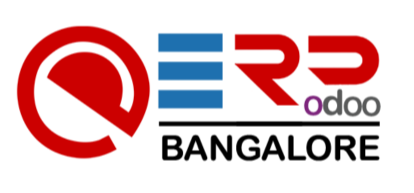Understanding Customized ERP Solutions
What is ERP?

Before diving into customized ERP solutions, it’s crucial to understand the fundamentals of ERP. Enterprise Resource Planning (ERP) refers to a suite of integrated applications that facilitate the seamless management of core business processes, including finance, human resources, inventory, supply chain, and customer relationship management. By consolidating data and processes into a unified system, ERP software empowers organizations to streamline operations, enhance collaboration, and gain valuable insights for informed decision-making.
The Limitations of Off-the-Shelf ERP Solutions

While off-the-shelf ERP solutions offer a range of functionalities that cater to general business needs, they often fall short when it comes to addressing the unique requirements of specific industries or organizations. These solutions may lack flexibility, scalability, or key features necessary to optimize workflows and drive growth. Additionally, businesses may find themselves constrained by rigid software configurations that do not align with their processes or objectives.
The Promise of Customization
Customized ERP solutions offer a compelling alternative to off-the-shelf software, providing businesses with the flexibility to tailor their ERP systems to suit their precise needs. By working closely with experienced developers and consultants, organizations can design bespoke solutions that align with their workflows, industry regulations, and strategic objectives. From customized modules and workflows to personalized dashboards and reporting tools, the possibilities for customization are virtually limitless, empowering businesses to optimize efficiency, productivity, and competitiveness.
The Case for Customization
-
Tailoring ERP Solutions to Unique Business Needs
- Understanding Business Specifics
Every business operates differently, with its own set of processes, workflows, and challenges. While off-the-shelf ERP solutions provide a standardized framework, they may not adequately address the intricacies of individual businesses. Customization allows organizations to fine-tune their ERP systems to accommodate unique requirements, whether it’s managing complex supply chains, integrating specialized modules, or adhering to industry-specific regulations.
- Flexibility and Scalability
Customized ERP solutions offer unparalleled flexibility and scalability, enabling businesses to adapt to changing market conditions and scale operations seamlessly. Whether it’s adding new functionalities, accommodating growth, or integrating with third-party systems, customization empowers organizations to evolve without constraints imposed by pre-packaged software.
- Enhanced User Experience
User adoption is critical for the success of any ERP implementation. By customizing the interface and workflows to match the preferences and workflows of end-users, organizations can enhance user experience, leading to increased productivity, efficiency, and satisfaction across the board.
-
Advantages of Customized ERP Solutions

- Competitive Advantage
In today’s competitive landscape, differentiation is key to success. Customized ERP solutions give businesses a competitive edge by optimizing processes, improving decision-making capabilities, and fostering innovation. By aligning the ERP system with unique business strategies and objectives, organizations can outperform rivals and capture market opportunities more effectively.
- Improved Efficiency and Productivity
Customized ERP solutions are designed to streamline operations and eliminate inefficiencies. By automating repetitive tasks, reducing manual interventions, and providing real-time insights, customized systems enable organizations to operate more efficiently, allocate resources effectively, and maximize productivity across departments.
- Better Decision Making
Data-driven decision-making is essential for driving business growth and profitability. Customized ERP solutions empower organizations with actionable insights and analytics tailored to their specific needs. By consolidating data from disparate sources and presenting it in a meaningful way, customized systems enable stakeholders to make informed decisions quickly and confidently.
- Enhanced Customer Satisfaction
Satisfied customers are the cornerstone of business success. Customized ERP solutions enable organizations to deliver personalized experiences, streamline customer interactions, and address unique needs effectively. By integrating customer relationship management (CRM) capabilities and customizing communication channels, businesses can build stronger relationships, improve retention rates, and drive customer loyalty.
-
Cost Considerations: Customization vs. Off-the-Shelf Solutions
- Upfront Costs vs. Long-term Value
While off-the-shelf ERP solutions may appear more cost-effective initially, the long-term value of customization often outweighs the upfront savings. Customized ERP solutions are tailored to address specific needs, reducing the likelihood of costly workarounds, inefficiencies, and missed opportunities in the future. By investing in customization upfront, organizations can achieve greater ROI and sustainable growth over time.
- Total Cost of Ownership (TCO)
When evaluating ERP solutions, it’s essential to consider the total cost of ownership (TCO), which encompasses not only the initial implementation costs but also ongoing maintenance, support, and potential upgrades. While customization may involve higher upfront costs, it can lead to lower TCO over the system’s lifecycle by minimizing customization and integration efforts, reducing dependency on external vendors, and maximizing system efficiency.
- Scalability and Adaptability
Off-the-shelf ERP solutions may struggle to accommodate evolving business needs and growth trajectories. As businesses expand or diversify, they may outgrow the capabilities of standardized systems, necessitating costly upgrades or replacements. Customized ERP solutions offer greater scalability and adaptability, enabling organizations to grow organically without being constrained by technology limitations.
- Value of Customization
Ultimately, the value of customization lies in its ability to align ERP systems with business strategies, optimize processes, and drive innovation. While off-the-shelf solutions provide a quick fix, customization offers a sustainable solution that evolves with the organization, enabling continuous improvement, competitive advantage, and long-term success.
The case for customization in ERP solutions is compelling, offering organizations the flexibility, agility, and strategic alignment needed to thrive in today’s competitive landscape. By tailoring ERP systems to meet unique business needs, organizations can unlock their full potential, drive growth, and stay ahead of the curve.
The Benefits of Customized ERP Solutions
-
Enhanced Efficiency and Productivity
One of the primary advantages of customized ERP solutions is their ability to streamline operations and automate repetitive tasks. By integrating disparate processes into a centralized system and eliminating manual data entry, businesses can reduce errors, accelerate processes, and free up valuable time for employees to focus on high-value tasks. Custom workflows and automation rules ensure that operations are optimized according to the unique needs and priorities of each department or function, driving efficiency and productivity across the organization.
-
Tailored Functionality
Off-the-shelf ERP solutions often provide a one-size-fits-all approach, offering a predefined set of features and modules that may not fully address the specific requirements of certain industries or businesses. In contrast, customized ERP solutions allow organizations to cherry-pick the functionalities they need and discard the ones they don’t, ensuring that every aspect of the system is tailored to their operations. Whether it’s specialized inventory management tools for manufacturing companies or advanced analytics capabilities for service-based businesses, customization enables organizations to build ERP systems that are perfectly aligned with their business models and objectives.
-
Scalability and Adaptability
As businesses evolve and grow, their ERP requirements may change accordingly. Off-the-shelf solutions may struggle to accommodate these changes, leading to scalability issues and operational bottlenecks. Customized ERP solutions, on the other hand, are designed with scalability and adaptability in mind, allowing organizations to easily modify and expand their systems as needed. Whether it’s adding new modules, integrating third-party applications, or incorporating emerging technologies like artificial intelligence and machine learning, customized ERP solutions provide the flexibility to evolve alongside the business, ensuring long-term viability and success.
-
Competitive Advantage
In today’s hyper-competitive business landscape, gaining a competitive edge is essential for survival and growth. Customized ERP solutions offer a unique opportunity for organizations to differentiate themselves by optimizing their processes, improving decision-making, and delivering superior customer experiences. By leveraging tailored functionalities, real-time insights, and predictive analytics, businesses can outmaneuver competitors, identify new opportunities, and stay ahead of industry trends. Whether it’s accelerating time-to-market, reducing costs, or enhancing customer satisfaction, customized ERP solutions can be a powerful driver of sustainable competitive advantage.
Implementing Customized ERP Solutions
-
Needs Assessment and Planning
The journey towards implementing a customized ERP solution begins with a comprehensive needs assessment and strategic planning process. This involves identifying key pain points, inefficiencies, and opportunities for improvement within the organization, as well as defining clear objectives and success criteria for the project. By engaging stakeholders from across the business, including department heads, IT professionals, and end-users, organizations can ensure that the customized solution addresses the specific needs and priorities of all stakeholders.
-
Vendor Selection and Collaboration
Choosing the right vendor or development partner is critical to the success of a customized ERP implementation. Organizations should seek out experienced providers with a proven track record of delivering tailored solutions within their industry. Collaborative partnerships built on trust, communication, and mutual understanding are essential for navigating the complexities of customization and ensuring that the final product meets expectations. Close collaboration between the vendor and the internal project team is key to defining requirements, designing the solution, and managing the implementation process effectively.
-
Development and Configuration
Once the requirements have been defined and the vendor selected, the development and configuration phase begins. This involves customizing the ERP system to meet the specific needs of the organization, including designing workflows, creating custom modules, and integrating third-party applications as necessary. Close attention should be paid to usability, performance, and scalability, ensuring that the final solution meets both current requirements and future growth objectives. Rigorous testing and quality assurance processes are essential to identify and address any issues or discrepancies before the system goes live.
-
Training and Change Management
Successful ERP implementations rely not only on robust technology but also on effective change management and user adoption strategies. Organizations should invest in comprehensive training programs to ensure that employees are equipped with the knowledge and skills they need to use the new system effectively. Clear communication, ongoing support, and feedback mechanisms are essential for addressing concerns, overcoming resistance to change, and fostering a culture of continuous improvement. By involving end-users in the process from the outset and emphasizing the benefits of the customized solution, organizations can maximize user adoption and realize the full potential of their ERP investment.
Overcoming Challenges
Potential Roadblocks in Customization:
- Resource Constraints: Customization often requires additional resources, both in terms of time and money. Lack of adequate resources can hinder the customization process, leading to delays or subpar outcomes.
- Complexity: Customization can introduce complexity into systems, processes, or products. Managing this complexity effectively is crucial to ensure that customization efforts don’t become overwhelming or unmanageable.
- Technical Limitations: Sometimes, existing technology infrastructure may not support the level of customization desired. This could include limitations in software capabilities, hardware constraints, or compatibility issues.
- Resistance to Change: Implementing customization initiatives may face resistance from various stakeholders within the organization. This resistance could stem from concerns about disruption to existing workflows, fear of the unknown, or reluctance to adapt to new approaches.
- Customer Expectations: Meeting diverse customer expectations through customization can be challenging. Balancing customization options with simplicity and usability is essential to avoid overwhelming customers or creating confusion.
- Regulatory Compliance: Customization efforts must comply with relevant regulations and industry standards. Failure to address regulatory requirements can lead to legal issues, fines, or reputational damage.
Mitigating Risks and Ensuring Success:
- Thorough Planning: A comprehensive planning phase is essential to identify potential challenges, assess risks, and develop strategies to mitigate them. This includes setting clear objectives, defining scope, and establishing realistic timelines and budgets.
- Investing in Technology: Investing in robust technology infrastructure and tools can help overcome technical limitations and streamline the customization process. This may involve upgrading software systems, implementing automation solutions, or integrating third-party platforms.
- Change Management: Effective change management strategies are crucial to address resistance and foster buy-in from stakeholders. This may involve communication campaigns, training programs, and incentives to encourage adoption of customization initiatives.
- Iterative Approach: Adopting an iterative approach to customization allows organizations to continuously refine and improve their offerings based on feedback from customers and stakeholders. This agile methodology enables quicker adaptation to changing requirements and market dynamics.
- Compliance Measures: Ensuring compliance with regulatory requirements should be a top priority. This may involve working closely with legal experts, conducting regular audits, and staying informed about evolving regulatory landscape.
- Customer Feedback and Testing: Soliciting feedback from customers and conducting thorough testing are essential steps in ensuring the success of customization initiatives. This feedback loop helps identify areas for improvement and validates the effectiveness of customization options.
Future Trends and Innovations
-
AI and Machine Learning in Customized ERP Solutions
Artificial Intelligence (AI) and Machine Learning (ML) are revolutionizing the capabilities of ERP systems, enabling them to evolve from static data repositories to dynamic, intelligent platforms. By leveraging AI and ML algorithms, ERP solutions can analyze vast amounts of data in real-time, extract valuable insights, and automate decision-making processes.
One of the most significant applications of AI and ML in ERP is the customization of systems to meet the unique needs of businesses. Traditional ERP systems often come with a one-size-fits-all approach, requiring extensive customization to align with specific organizational requirements. However, AI-powered ERP solutions can adapt and learn from user interactions, automatically adjusting workflows, configurations, and recommendations based on evolving business needs.
For example, AI-driven ERP systems can analyze historical data patterns to predict future demand, optimize inventory levels, and automate supply chain management processes. By harnessing the power of AI, organizations can enhance forecasting accuracy, minimize stockouts, and improve overall operational efficiency.
Furthermore, AI and ML algorithms enable ERP systems to provide intelligent insights and recommendations, empowering users to make data-driven decisions. Whether it’s identifying cost-saving opportunities, optimizing resource allocation, or detecting anomalies in financial transactions, AI-driven ERP solutions offer invaluable support to decision-makers at all levels of the organization.
-
Cloud-Based ERP Systems: Driving Accessibility and Collaboration
The adoption of cloud computing has revolutionized the way businesses deploy and manage their IT infrastructure, and ERP systems are no exception. Cloud-based ERP solutions offer unparalleled flexibility, scalability, and accessibility, making them increasingly popular among organizations of all sizes.
Unlike traditional on-premises ERP deployments that require significant upfront investment in hardware and infrastructure, cloud-based ERP systems operate on a subscription-based model, allowing businesses to pay only for the resources they use. This eliminates the need for costly hardware procurement and maintenance, enabling organizations to allocate resources more efficiently and focus on core business activities.
Moreover, cloud-based ERP systems facilitate seamless collaboration and communication across geographically dispersed teams. With data stored securely in the cloud, employees can access the ERP system anytime, anywhere, using any internet-enabled device. This fosters greater agility and responsiveness, enabling organizations to adapt quickly to changing market conditions and customer demands.
Additionally, cloud-based ERP solutions offer built-in disaster recovery and data backup capabilities, ensuring business continuity in the event of unforeseen disruptions or emergencies. By entrusting their ERP infrastructure to reputable cloud service providers, organizations can mitigate risks associated with data loss, security breaches, and system downtime, thereby safeguarding their operations and reputation.
-
Integration with IoT and Industry 4.0 Technologies
The rise of the Internet of Things (IoT) and Industry 4.0 is driving unprecedented connectivity and automation across various industries, and ERP systems are becoming integral components of this digital transformation. By integrating IoT devices and sensors with ERP platforms, organizations can collect real-time data from the physical world, enabling them to monitor, analyze, and optimize processes in ways never before possible.
For instance, in manufacturing environments, IoT-enabled ERP systems can capture data from production equipment, machinery, and sensors deployed on the factory floor. This data can then be fed into the ERP system, providing insights into equipment performance, production efficiency, and quality control. By leveraging this information, organizations can identify bottlenecks, minimize downtime, and optimize resource utilization, ultimately enhancing productivity and profitability.
Furthermore, integration with Industry 4.0 technologies such as digital twins, augmented reality (AR), and predictive maintenance enables ERP systems to deliver advanced capabilities for process optimization and decision support. For example, digital twins allow organizations to create virtual replicas of physical assets, enabling simulation, analysis, and optimization of production processes in a virtual environment. Similarly, AR technology can provide real-time guidance and instructions to workers, improving task efficiency and reducing errors on the shop floor.
Conclusion:
As businesses navigate an increasingly complex and competitive landscape, the importance of tailored solutions cannot be overstated. Customized ERP solutions offer organizations the flexibility, scalability, and efficiency needed to thrive in the digital age. By understanding the unique requirements of their operations and partnering with experienced ERP providers, businesses can unlock new levels of productivity, innovation, and growth.
Faqs
- What are the benefits of a customized ERP solution?
Customized ERP solutions offer several benefits, including improved efficiency, streamlined processes, better decision-making through real-time data access, enhanced scalability, and increased competitive advantage.
- How does customization differ from configuration in an ERP system?
Configuration involves setting up the ERP system according to predefined options and parameters, while customization involves modifying the software code or adding new features to meet unique business needs.
- What are the key considerations before implementing a customized ERP solution?
Key considerations include understanding business requirements thoroughly, evaluating customization vs. standard features, assessing the scalability of the solution, considering future needs, and ensuring compatibility with existing systems.
- How long does it take to develop and implement a customized ERP solution?
The timeline for developing and implementing a customized ERP solution varies depending on the complexity of customization, the size of the organization, and the level of integration required. It can range from several months to a year or more.
- What are the potential challenges associated with implementing a customized ERP solution?
Challenges may include higher development costs, longer implementation time, difficulty in maintaining and upgrading the system, potential compatibility issues with other software, and the need for ongoing support and training.
- How do you ensure data security and privacy in a customized ERP solution?
Data security and privacy measures should be integrated into the design and implementation of the customized ERP solution, including encryption, access controls, regular security audits, and compliance with relevant regulations such as GDPR or HIPAA.
- Can a customized ERP solution be integrated with other business systems?
Yes, a well-designed customized ERP solution can be integrated with other business systems such as CRM (Customer Relationship Management), HRM (Human Resource Management), SCM (Supply Chain Management), and BI (Business Intelligence) tools to create a unified ecosystem.
- What role does user training play in the successful implementation of a customized ERP solution?
User training is crucial for ensuring that employees understand how to use the customized ERP system effectively. Proper training can minimize resistance to change, improve user adoption rates, and maximize the ROI of the ERP investment.
- How often should a customized ERP solution be updated or upgraded?
The frequency of updates or upgrades depends on factors such as changes in business requirements, technological advancements, regulatory compliance, and the availability of new features or security patches. Regular assessments should be conducted to determine the need for updates.
- What level of ongoing support is available for a customized ERP solution?
Ongoing support for a customized ERP solution may include technical assistance, troubleshooting, software updates, maintenance services, and access to a helpdesk or customer support team.
- Can a customized ERP solution be migrated to the cloud?
Yes, a customized ERP solution can be migrated to the cloud to leverage benefits such as scalability, flexibility, accessibility, and reduced infrastructure costs. However, careful planning and execution are required to ensure a smooth transition.
- How does a customized ERP solution adapt to changes in business processes or requirements?
A well-designed customized ERP solution should be flexible and configurable to accommodate changes in business processes or requirements. This may involve periodic reviews, adjustments to system configurations, and additional customization if necessary.








